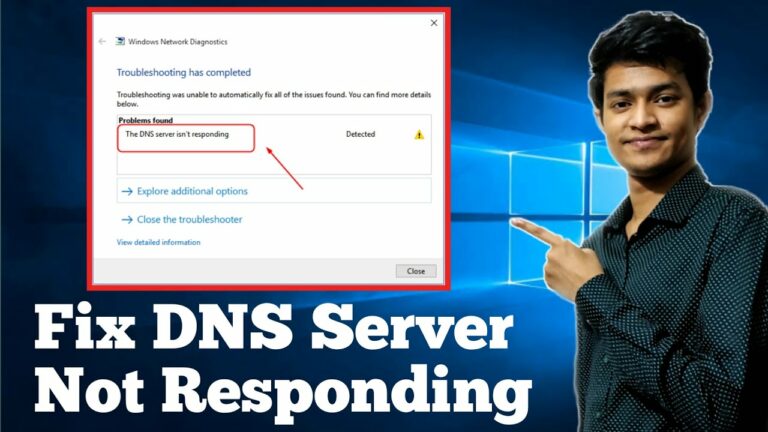Choosing the Right Hosting Provider: Ensuring a reliable and reputable hosting provider is crucial for hosting your domain name.
Choosing the right hosting provider is an essential step when it comes to hosting your domain name. A reliable and reputable provider ensures that your website is accessible to users without experiencing frequent downtime or slow loading speeds. It’s important to consider factors such as uptime guarantees, customer support, security measures, and scalability options when making your decision. By choosing a hosting provider that meets these criteria, you can ensure a smooth and reliable online presence for your website.
One of the key aspects to look for in a hosting provider is their reputation in the industry. Do some research and read customer reviews to gauge the reliability and quality of their services. Look for providers that offer a high level of technical support, preferably 24/7, as this can be crucial in resolving any issues that may arise. Additionally, consider their infrastructure and server locations to ensure optimal performance and speed for your website. By carefully selecting the right hosting provider, you can set the foundation for a successful online presence.
Registering a Domain Name: Before hosting a domain, you need to register it with a domain registrar.
To establish your online presence, the first step is to register a domain name with a domain registrar. A domain name serves as the unique address for your website on the internet. Before you can proceed with hosting the domain, it is essential to secure ownership of the chosen name. When selecting a domain registrar, it is crucial to consider their reputation, reliability, and customer support. Look for a registrar that offers competitive pricing, easy domain management tools, and solid security measures. Registering your domain name is a straightforward process that involves providing your contact information and agreeing to the registrar’s terms and conditions. Once registered, you will have full control over your domain and can proceed with the next steps of hosting your website.
When registering a domain, take your time to choose a name that reflects your brand, is easy to remember, and aligns with your website’s purpose. Ideally, your domain name should be short, relevant, and memorable. You can choose from various domain extensions, like .com, .org, .net, or country-specific extensions such as .co.uk or .fr. Keep in mind that the availability of domain names may vary, especially for highly sought-after names. It is advisable to conduct a search to confirm if your chosen domain name is available. If not, you might need to consider alternative options or be creative by using hyphens or synonyms. Once you have successfully registered your domain name, you can move forward with the next critical steps of hosting and building your website.
Understanding DNS: Familiarize yourself with the Domain Name System (DNS) and its role in hosting a domain name.
The Domain Name System (DNS) plays a crucial role in the hosting of a domain name. It acts as the backbone of the internet, translating human-readable domain names into IP addresses that computers can understand. In simpler terms, DNS is like the phone book of the internet, matching domain names with the corresponding IP addresses of the servers hosting the websites.
When you type a website address into your browser, the DNS system works behind the scenes to connect you to the correct website. It processes your request and looks up the IP address associated with the domain name you entered. This enables your browser to establish a connection with the hosting server and retrieve the website’s files, allowing you to view its content. Understanding how DNS functions is essential for managing and troubleshooting domain hosting issues effectively.
- DNS acts as the backbone of the internet, translating domain names into IP addresses.
- It functions like a phone book, matching domain names with corresponding server IP addresses.
- When you enter a website address into your browser, DNS connects you to the correct website by looking up its IP address.
- This allows your browser to establish a connection with the hosting server and retrieve the website’s files for viewing.
- Understanding DNS is crucial for effectively managing and troubleshooting domain hosting issues.
Configuring DNS Settings: Learn how to configure DNS settings to point your domain to the hosting provider’s servers.
Configuring DNS settings is an essential step in hosting a domain. It involves pointing your domain to the hosting provider’s servers, ensuring that visitors can access your website. To configure DNS settings, you will need to access your domain registrar’s control panel and locate the DNS management section. Here, you can add or modify DNS records to specify which servers are responsible for handling various types of requests for your domain.
The most common DNS records that need to be configured are the A record and the CNAME record. The A record is used to map your domain to an IP address, which is the unique identifier for the server hosting your website. The CNAME record, on the other hand, allows you to create aliases for specific subdomains or redirect them to other domains. By correctly setting up these DNS records, you can ensure that your domain points to the right hosting provider and that visitors can reach your website without any issues.
Setting up Email Accounts: Explore the process of creating and managing email accounts associated with your hosted domain.
Creating and managing email accounts associated with your hosted domain is a crucial step in establishing a professional online presence. A well-structured email system allows you to communicate effectively with clients, customers, and employees, enhancing credibility and streamlining your business operations.
To begin the process, you first need to access your hosting provider’s control panel or dashboard. Here, you will typically find an option to manage your email accounts. Click on this option to proceed to the email account management page. From there, you can select “Add New Account” or a similar option, which will prompt you to enter the desired email address and password. It is advisable to choose an email address that reflects your domain name, as it lends a sense of authenticity and professionalism to your business. Once you have entered the necessary details, click on “Create” or “Save” to finalize the creation of your new email account.
Installing a Content Management System (CMS): Discover the steps involved in installing a CMS, such as WordPress, to manage your website content.
Installing a Content Management System (CMS) is a crucial step in managing your website’s content effectively. One popular CMS option is WordPress, which offers a user-friendly interface and a wide range of customization options. To install WordPress, download the latest version from the official website. Next, access your hosting account and locate the File Manager or FTP details. Upload the WordPress files to your hosting server and create a MySQL database for the CMS. Finally, run the WordPress installation script and follow the on-screen instructions to complete the setup process. With WordPress successfully installed, you can now start creating and managing your website’s content with ease.
While WordPress is a widely used CMS, it’s essential to explore other options available based on your specific website requirements. Joomla and Drupal are two popular alternatives known for their robustness and extensibility. Whichever CMS you choose, the installation process may vary slightly, but the general steps remain consistent. Familiarize yourself with the specific installation instructions provided by the CMS developers, ensuring a smooth and hassle-free setup. With a reliable CMS in place, you can streamline your website’s content management and enhance the overall user experience.
Uploading Website Files: Learn how to upload your website files to the hosting server using FTP or a file manager.
When it comes to hosting your website, one essential step is uploading your website files to the hosting server. This process can be accomplished using either FTP (File Transfer Protocol) or a file manager. FTP allows you to transfer files from your local computer to the hosting server using a dedicated FTP client. On the other hand, a file manager, typically provided by your hosting provider, enables you to upload files directly through a web-based interface.
To begin uploading your website files, you first need to access your hosting account. Your hosting provider will provide you with login credentials, including a username and password, to access the server. Once you have logged in, you can navigate to the appropriate section for file uploading. If you are using FTP, you will need to enter the server’s FTP address, your username, and password in your FTP client. From there, you can simply drag and drop your website files from your local computer to the server. If you are using a file manager, you can use the upload functionality to select files from your computer and transfer them directly to the server.
Securing Your Domain: Implement essential security measures to protect your hosted domain from potential threats.
Securing your domain is of utmost importance to protect your website from potential threats. Implementing essential security measures can help safeguard your hosted domain, ensuring the confidentiality, integrity, and availability of your website.
One crucial aspect of securing your domain is employing a robust firewall. A firewall acts as a barrier between your website and unauthorized access or malicious activities. It monitors incoming and outgoing traffic, filtering out any suspicious or harmful data packets. By setting up a firewall, you can effectively prevent unauthorized access to your website and minimize the risk of cyber-attacks.
Another essential security measure is the use of SSL (Secure Sockets Layer) certificates. SSL certificates encrypt the data transmitted between your website and visitors, guaranteeing secure and private communication. It ensures that sensitive information, such as login credentials and financial details, remains encrypted and protected from being intercepted by hackers. By installing an SSL certificate, you can enhance the trustworthiness of your website and provide a secure browsing experience for your users.
Remember, securing your domain is an ongoing process. Regularly updating software, plugins, and themes on your website is crucial to patch any vulnerabilities that cybercriminals may exploit. Additionally, implementing strong and unique passwords, enabling two-factor authentication, and regularly backing up your website are all important measures in maintaining the security of your hosted domain. Stay proactive and vigilant in order to protect your website and user data from potential security breaches.
Monitoring Website Performance: Understand the importance of monitoring your website’s performance and employing optimization techniques.
Monitoring website performance is a crucial aspect of ensuring a seamless and efficient user experience. When visitors access your website, they expect it to load quickly and function smoothly. By monitoring your website’s performance, you can identify any issues or bottlenecks that may be slowing it down or causing glitches.
Regularly monitoring your website’s performance also allows you to gather valuable data and insights. By analyzing metrics such as page load times, bounce rates, and conversion rates, you can gain a deeper understanding of how users interact with your website. This information can then be used to optimize and improve various aspects of your site, such as page design, content placement, and server configurations. With continuous monitoring and optimization, you can ensure that your website remains fast, reliable, and user-friendly.
Troubleshooting Common Issues: Familiarize yourself with common domain hosting issues and how to troubleshoot them effectively.
One of the challenges that website owners may encounter when hosting a domain is the occurrence of common issues. These issues can disrupt the proper functioning of the website, resulting in frustrations for both the website owner and the site visitors. It is important to familiarize yourself with these common domain hosting issues and learn how to troubleshoot them effectively in order to minimize any potential downtime for your website.
One common issue that website owners often come across is server errors. These errors can be caused by various factors, such as misconfigured server settings or server overload due to high website traffic. To troubleshoot server errors, it is recommended to check the server logs for any error messages and investigate the root cause. Additionally, optimizing server settings, upgrading server resources, or seeking assistance from the hosting provider’s support team can help resolve these issues and ensure the smooth operation of your website.
FAQs
How do I choose the right hosting provider for my domain?
When selecting a hosting provider, it is important to consider factors like reliability, reputation, customer support, pricing, and features offered. Research different providers, read reviews, and compare their services before making a decision.
What is the process of registering a domain name?
To register a domain name, you need to choose a domain registrar, search for the availability of your desired domain name, provide the necessary information, and complete the registration process by paying the registration fee.
What is the role of DNS in hosting a domain name?
The Domain Name System (DNS) translates domain names into IP addresses, allowing computers to locate and communicate with websites. It plays a crucial role in directing traffic to the correct hosting server associated with a domain.
How do I configure DNS settings for my domain?
DNS settings can be configured through your domain registrar’s control panel. You will need to create DNS records, such as A and CNAME records, and point them to the IP address or domain provided by your hosting provider.
How can I set up email accounts for my hosted domain?
To create and manage email accounts, you can use the email service provided by your hosting provider or configure email through a separate email service. Follow the instructions provided by your hosting provider or refer to an email setup guide.
What is a Content Management System (CMS) and how do I install it?
A CMS is a software application that allows you to create, manage, and modify website content without coding knowledge. To install a CMS like WordPress, you typically need to download the CMS files, create a database, and follow the installation wizard provided by the CMS.
How can I upload my website files to the hosting server?
Website files can be uploaded using FTP (File Transfer Protocol) or a file manager provided by your hosting provider. Access your hosting account’s control panel, navigate to the file management section, and follow the instructions to upload your files.
What security measures should I take to protect my hosted domain?
Implementing essential security measures includes using strong passwords, keeping software up to date, installing SSL certificates, enabling firewall protection, regularly backing up your website, and monitoring for any suspicious activity.
Why is it important to monitor website performance?
Monitoring website performance helps identify issues or bottlenecks that may affect user experience. By tracking metrics like page load speed, uptime, and server response time, you can optimize your website for better performance, improve user satisfaction, and address any issues promptly.
How can I effectively troubleshoot common domain hosting issues?
Troubleshooting domain hosting issues involves identifying the problem, checking DNS settings, reviewing error logs, testing connectivity, seeking support from your hosting provider, and exploring online resources or forums for solutions specific to the issue you are facing.




